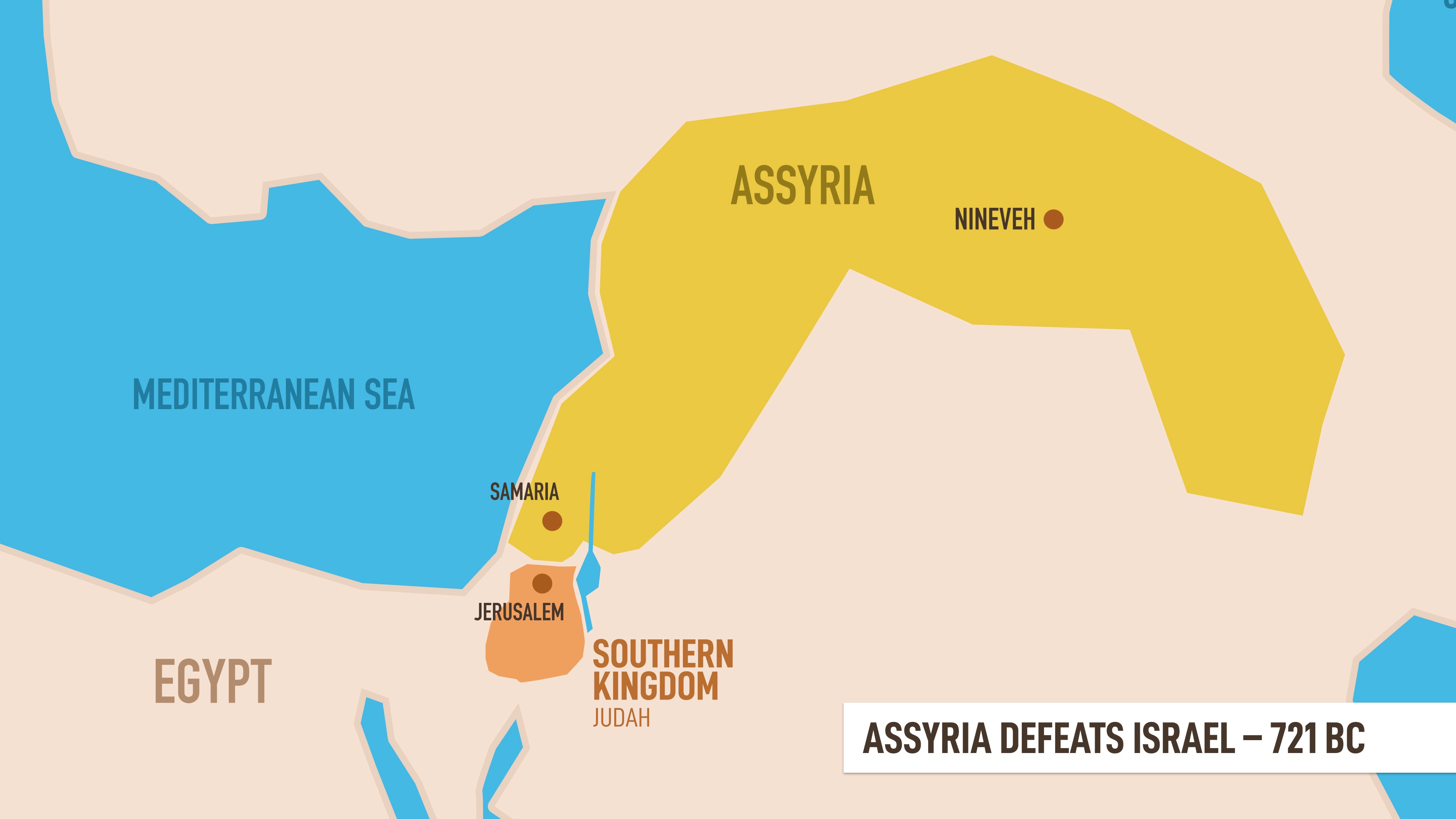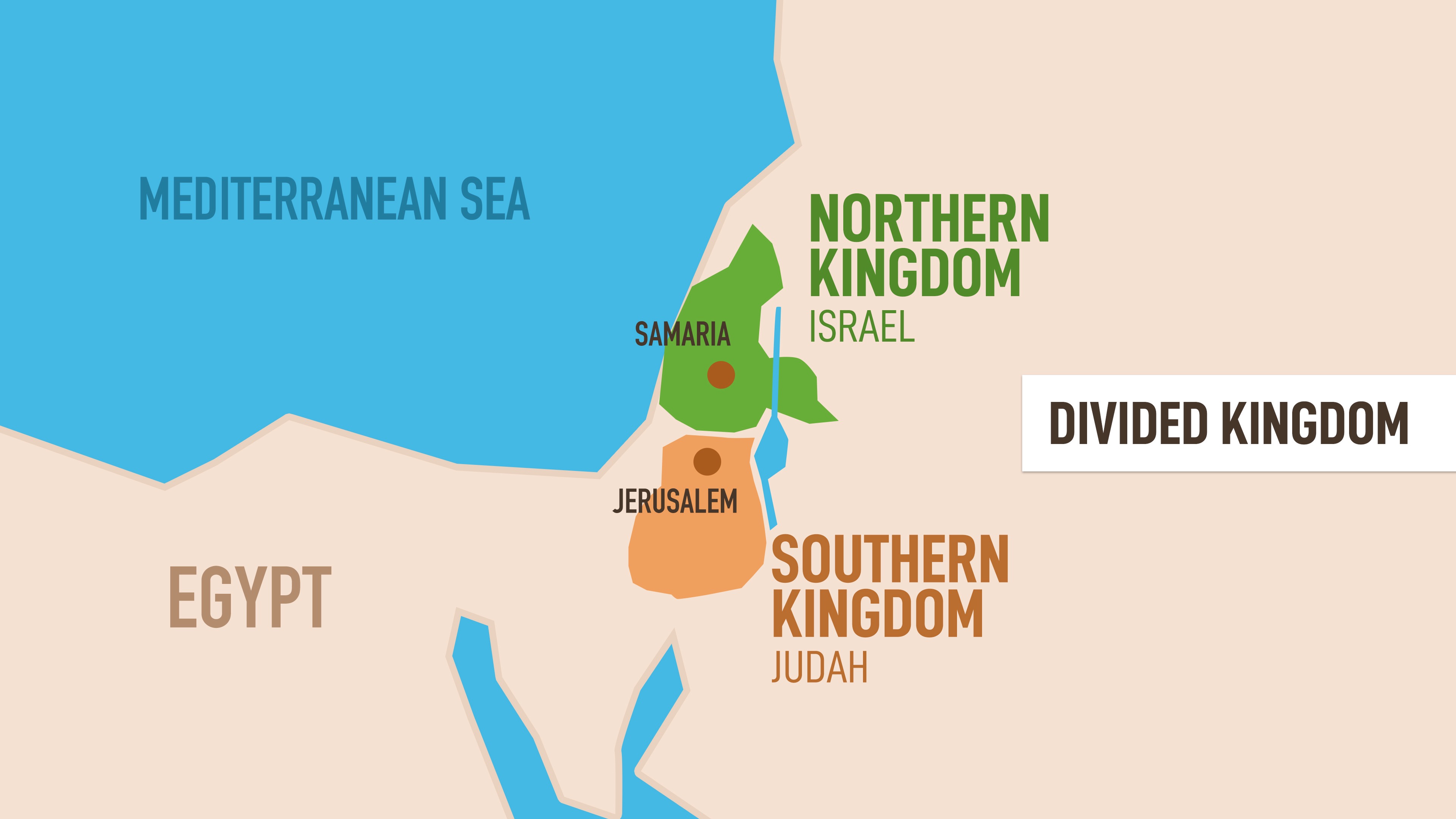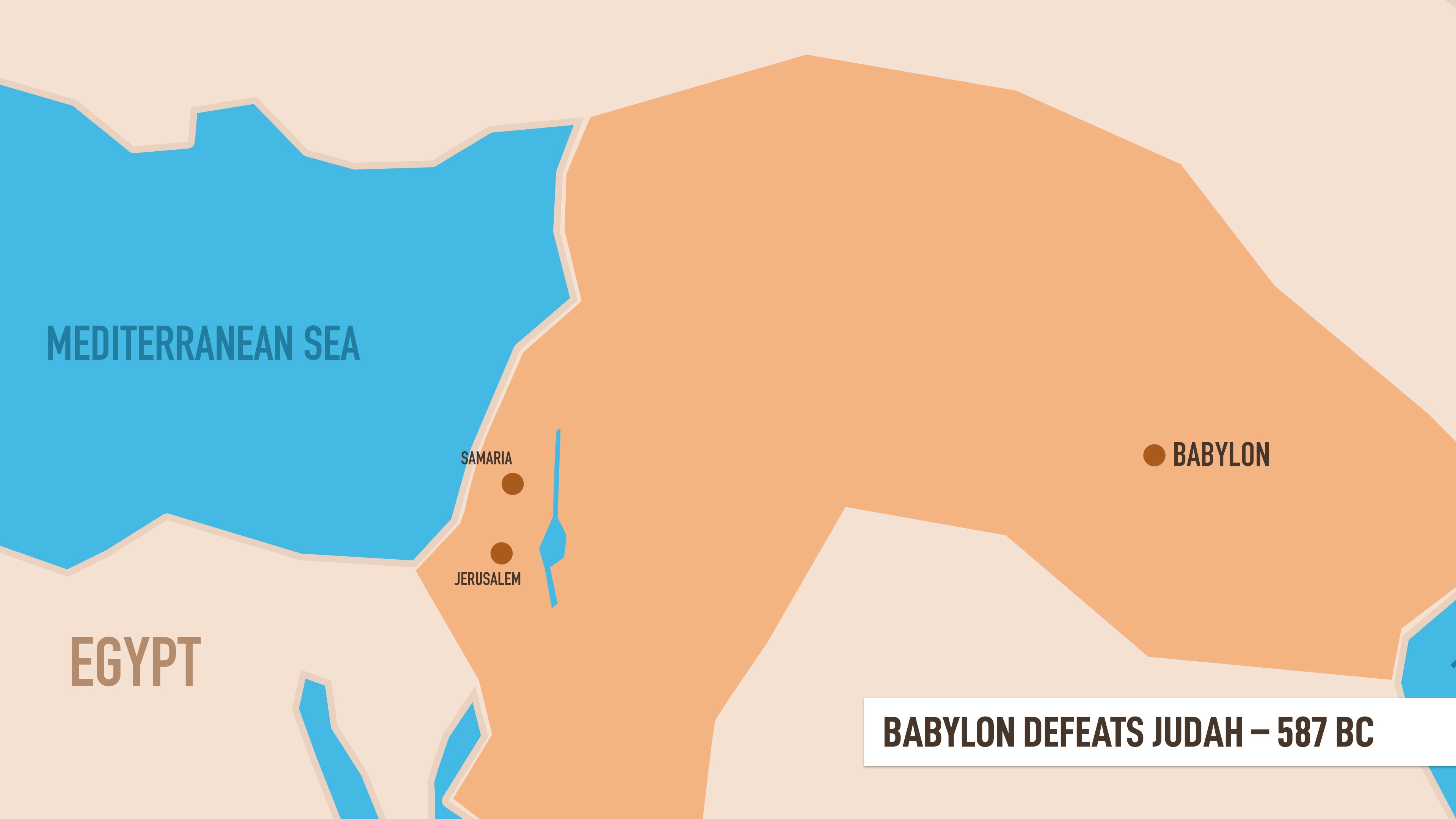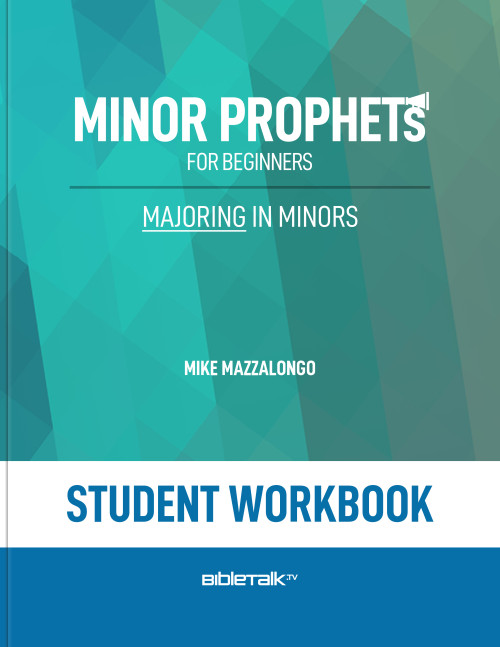Introduction
Let me begin our story of the Minor Prophets by stating two basic facts about them:
1. These 12 books are referred to as the Minor Prophets because of the length of their books and not because of the importance or legitimacy of the prophets who wrote them.
For example, when examining the major prophets, we see that:
- Isaiah's book – 66 chapters
- Jeremiah's book – 52 chapters + Lamentations – 5 chapters = 57 chapters
- Ezekiel's book – 48 chapters
- Daniel's book - 12 chapters
- Average length of Major Prophets' Books = 46 Chapters
The average length of the 12 Minor Prophets' books is about 6 chapters. Therefore, minor because of the length, not because of importance or legitimacy.
2. Apparently, the name, "Minor Prophets" was coined by Augustine who referred to the longer books as major and the shorter books as Minor Prophets (Augustine AD 354-430).
I. Minor Prophets – History/Timeline
In a general sense the Minor Prophets can be divided into three main periods:

A. 721 BC – This the year that the Northern Kingdom of Israel was defeated by the Assyrian army and the Jewish people were carried off and relocated in various parts of the Assyrian Empire where they were eventually assimilated into foreign culture, foreign families, and pagan religions and practices. We know that from about 1000 BC to 900 BC the Jewish nation composed of 12 tribes descended from Jacob (Son of Isaac, Son of Abraham) were eventually united under king Saul, then David and finally Solomon.

When Solomon died in 931 BC a civil war broke out to decide who would reign over the 12 tribes. This led to a split in the United Kingdom with the 2 tribes (Judah and Benjamin) remaining loyal to Solomon's son, Rehoboam, who ruled what was then called the Southern Kingdom of Judah with its capitol in the city of Jerusalem.
The other ten tribes located in the north also formed what was called the Northern Kingdom of Israel and led by one of Solomon's former officials, Jeroboam, who ruled from its first capital city, Shechem. The Northern Kingdom also had the city of Tirzah as capital and finally the city of Samaria which remained its capitol until the kingdom was defeated by the Assyrians in 721 BC.
Therefore, from the death of Solomon in 931 BC to the destruction of the Southern Kingdom in 587 BC you had a divided kingdom lasting approximately 350 years with each kingdom, North and South – having 20 kings reigning over them.
The Northern Kingdom, because it was mainly absorbed by other cultures and religions, was never reestablished. The people were referred to as the lost tribes of Israel. Some returned to settle back in their ancient tribal territories but because they had mixed with other nations and pagan religions were no longer considered purely Jewish and referred to as Samaritans, the original name of the land and capitol of the northern tribes (Samaria). They continued to be mentioned in Jewish historical records right up to the time of Jesus (Woman at the well – John 4:4-42) but were never again included as part of the Jewish nation and not permitted to participate in temple worship. With time they were held in contempt by the Jews and the word Samaritan was used as a term of derision by Jewish people – "The Jews answered and said to Him (Jesus) 'Do we not say rightly that you are a Samaritan and have a demon?'" (John 8:48).
"To the Orthodox Jew of the time, a Samaritan was more unclean than a Gentile of any other nationality."
- J.E. Talmage – Jesus the Christ.
Therefore, the area of the Northern Kingdom was eventually repopulated by mixed race Jews and referred to as Samaria.

After its defeat in 587 BC by Nebuchadnezzar II of Babylon, many of the Jewish survivors (artisans, craftsman, young nobles, young women, priests, Levites, temple officials, rabbis) were carried off into exile in Babylon.
Unlike the Assyrians, however, whose method with conquered peoples was to destroy their unity and culture by spreading them into foreign nations thereby eliminating them as a future threat. Therefore, the Northern Kingdom of the Jews never became a powerful nation again, even after many people returned to Samaria.
The Babylonians, however, built up their empire by re-educating and re-training their exiled captives for service to the Babylonian empire depending on education, skill, or trade (example – Daniel).
This enabled the Jewish exiles in the Southern Kingdom of Judah to maintain their culture and religion even while living in exile in a foreign nation. It is during the years in Babylon that the Jews began to establish synagogues (Hebrew term for "house of prayer") in order to continue organized worship since their temple in Jerusalem was destroyed.
The New Testament church is patterned after the Jewish synagogue where the activities were similar – teaching, prayer, praise, fellowship, and service. The main difference being that in the synagogue the high point was the reading from the Law or prophets often concerning the promise of a Messiah, and preparation for the keeping the feasts, especially the Passover. In the New Testament church, the high point is the commemoration of the coming of the Messiah and His atonement on the cross followed by His resurrection three days later.
In other words, the Jews worshipped in hope of a coming savior and many still do so today. We Christians, on the other hand, worship in thanksgiving for the Savior Who has come and presently wait for His return.
Make no mistake, despite the events in the news, their ancient customs and the seeming wisdom of their great religious teachers, as well as the bravery of their military and success in the world of art, science, and finance – the Jewish nation and religion continues to categorically and strongly deny that Jesus is their Messiah or the Son of God, and consciously strive to reject this idea. They are not sympathetic to Christianity and undermine its promotion when possible.
They rejected Jesus as Lord some 2,000 years ago and continue to do so today as a group although there are always a few who confess Christ in every generation. Of course, we have no prejudice against any nation including our Jewish neighbors, desiring that every nation hears and believes the gospel and that all are baptized in His name and become as we are, disciples of the Lord Jesus Christ.
Back to my main point, the Southern Kingdom maintained its cultural purity and religious practice even while in exile – and thus when Jeremiah's prophecy of their eventual return after 70 years was fulfilled, they were able to take advantage of this blessing.
'Then it will be when seventy years are completed I will punish the king of Babylon and that nation,' declares the Lord, 'for their iniquity, and the land of the Chaldeans; and I will make it an everlasting desolation.
- Jeremiah 25:12
When the time for their return came about, they were not only ready, but actually able to reestablish a uniquely Jewish kingdom much like the one they had before they were sent into exile. The account of this return and reestablishment is recorded in the books of Ezra, Nehemiah, Haggai, Zechariah, and Malachi.
Let us look at a timeline of this period and assign the prophets who were sent by God to speak to the Northern and Southern Kingdoms, mainly warning of the calamities that were coming upon them because of their disobedient conduct.
Assigning the minor prophets according to this timeline helps us to remember them and their messages more easily than by simply memorizing the order that they appear in the Old Testament. Before doing this, however, I'd like to review and compare the Hebrew Bible with the Old Testament.
II. Organization of the Canon (Inspired Books):
A. The Hebrew Bible – Judaism
Torah – Instruction
- Genesis, Exodus, Leviticus, Numbers, Deuteronomy
Nevi'im – Prophets
Former
- Joshua, Judges, Samuel, Kings
Latter
- Isaiah, Jeremiah, Ezekiel
Minor – Grouped in a single book
- Hosea, Joel, Amos, Obadiah, Jonah, Micah, Nahum, Habakkuk, Zechariah, Haggai, Zephaniah, Malachi
Ketuvim – The Writings (Poetic)
- Psalms, Proverbs, Job
5 Megillot – Scrolls
- Song of Songs, Ruth, Lamentations, Ecclesiastes, Esther
Historical
- Daniel, Ezra, Nehemiah, Chronicles
Total – 24 books
B. The Old Testament – Christianity
Pentateuch
- Genesis, Exodus, Leviticus, Numbers, Deuteronomy
Historical
- Joshua, Judges, Ruth, I & II Samuel, I & II Kings, I & II Chronicles, Ezra, Nehemiah, Esther
Wisdom
- Job, Psalms, Proverbs, Ecclesiastes, Song of Solomon
Prophetic (Major)
- Isaiah, Jeremiah, Lamentations, Ezekiel, Daniel
(Minor)
- Hosea, Joel, Amos, Obadiah, Jonah, Micah, Nahum, Habakkuk, Zephaniah, Haggai, Zechariah, Malachi
Total 39 books
C. Deuterocanonical I
These books are considered canonical (inspired) by Roman Catholic, Eastern Orthodox, Oriental Orthodox, and the Assyrian Orthodox churches – but not by Jewish, Protestant, or Restoration (churches of Christ). "Oriental" refers to geographic location and includes: Ethiopian, Coptic, Armenian, Syrian, Eritrean.
- Tobit, Judith, Additions to Esther, I & II Maccabees, Wisdom of Solomon, Sirach, Baruch, Letter of Jeremiah, Additions to Daniel
D. Deuterocanonical II
These books are considered canonical (inspired) by only orthodox churches.
- I & II Esdras, Prayer of Manasseh, Psalm 151, III & IV Maccabees, Odes
These additional books are included in most Catholic and Orthodox Bibles and provide information about the period of 400 years between the Old and New Testaments. They are often referred to as books of the Apocrypha or hidden books. They were rejected for inclusion in the New Testament canon (means – measure: which books measure up to a standard). They were not accepted in the canon because:
- They lacked Apostolic authorship or authority (i.e. Luke was not an Apostle but he was a disciple of Paul, the Apostle. Mark was not an Apostle, but was an early disciple of both Paul and Peter who were both Apostles chosen by Jesus.
- Many books were rejected because they had errors or were too shallow in spiritual content to be included.
In any event, Jude tells us that we have the true body of faith given to the saints once for all – Jude 3; and Peter in II Peter 1:1-4 assures us that God has given us, in His word, everything we need for spiritual life.
We know that the Minor Prophets were accepted into the canon of the Hebrew Bible by 150 BC.
III. Minor Prophets – Timeline
An easy way to remember when the twelve Minor Prophets lived as well as the focus of their ministry is to know that they belong to one of three main periods and places.
1. Fall of the Northern Kingdom – 721 BC
Before the fall of the Northern Kingdom, God sent prophets to warn and encourage them to repent. There are many debates among scholars as to the dates when these prophets appeared but I leave them in the order that they are listed in the Hebrew Bible.
- Hosea – uncertain date or object of message
- Amos – from south but preached to north
- Obadiah – uncertain but included here
- Jonah - preached to the people of Nineveh (Capitol of the Assyrian empire).
- Micah – also from the south
2. Fall of the Southern Kingdom – 587 BC
In the same way, before the fall of the Southern kingdom, God sent prophets to warn them – in addition to providing the example of the Northern Kingdom's fall.
- Nahum, Habakkuk, Zephaniah
3. Return of the exiles to Judea and Jerusalem – 538-457 BC
When Jeremiah's 70-year prophecy was fulfilled and some of the exiles returned, God sent prophets to encourage, teach, and rebuke the people who had returned and had reinstated temple worship.
- Haggai, Zechariah, Malachi
Summary
We've looked at these Minor Prophets in two main ways so far:
- Where their books are located in both the Hebrew and Old Testament canons.
- When these men served in the history of the Jewish people and their particular role as God's prophets.
In the next chapter we will begin our review and summary of these books. In this course we will not be doing a line-by-line study of each Minor Prophet, but rather a summary of the content, history, main features, as well as information about the author and the purpose/message of each book finishing with some modern-day applications.
Hopefully, by the end of this study, if someone mentions the name of one of these prophets you'll know when he lived, who he preached to, his main message, and the particular features of his book.
For example: Hosea married a prostitute, Micah spoke of Jesus' birthplace, and Zechariah had a vision of a flying scroll.
In the end you'll not be experts, but you will be familiar with each book and where it fits into the whole, plus you will finally have a good reason to begin reading the Minor Prophets. The plan is that you will read the books before reading the study guide, we will review and analyze the books in our study and then you will re-read the books to complete the process.





